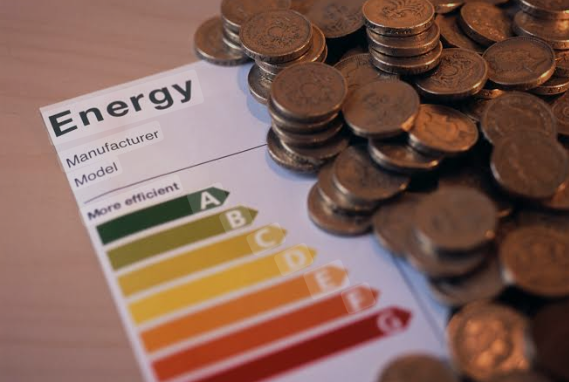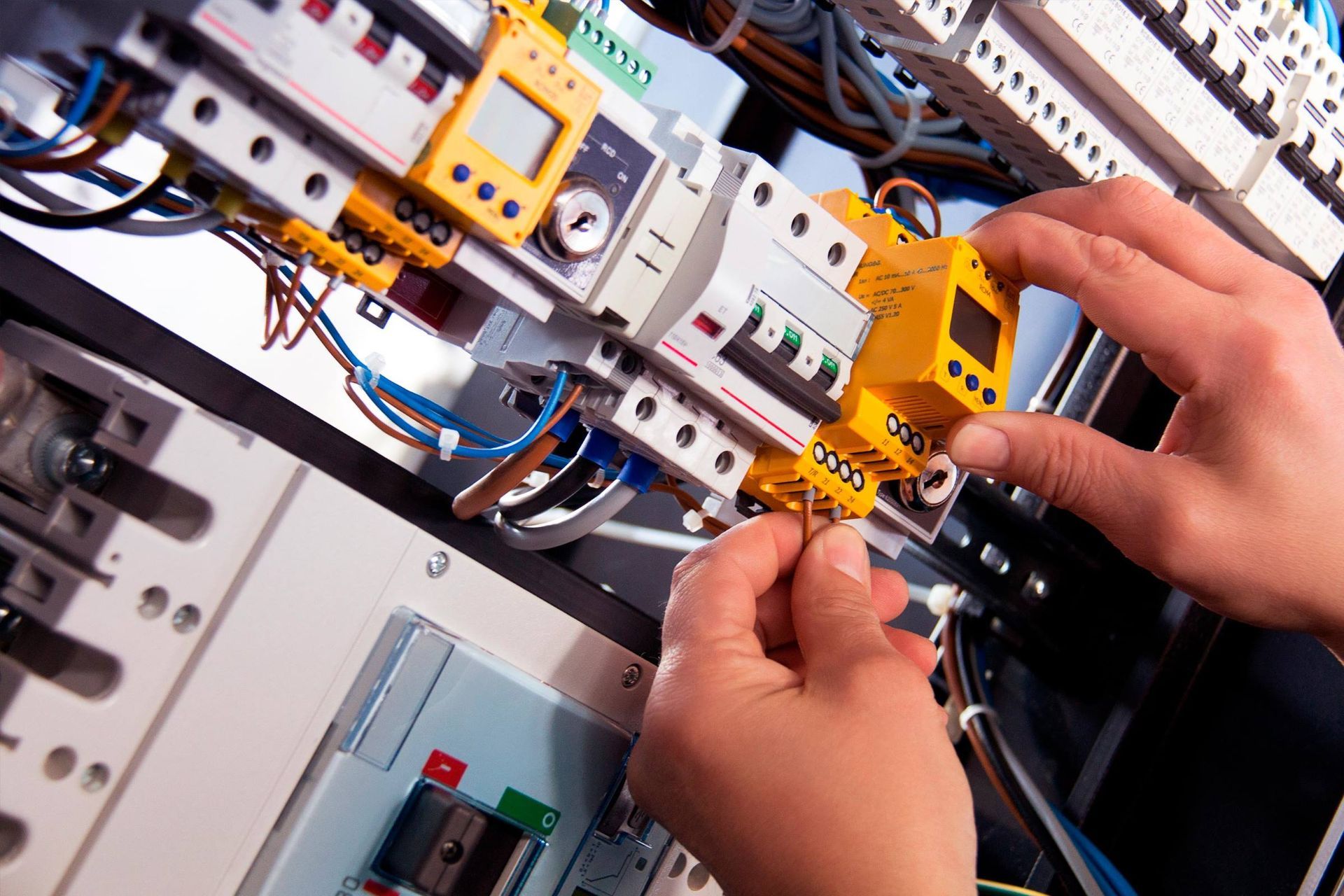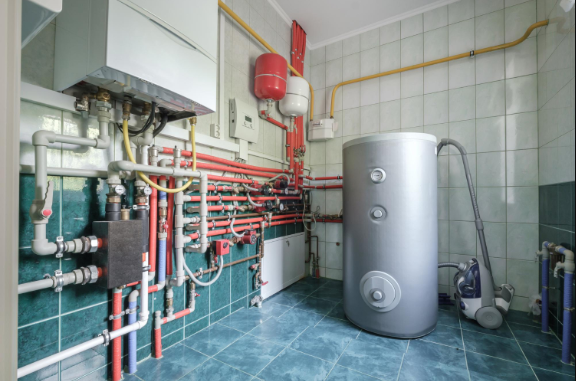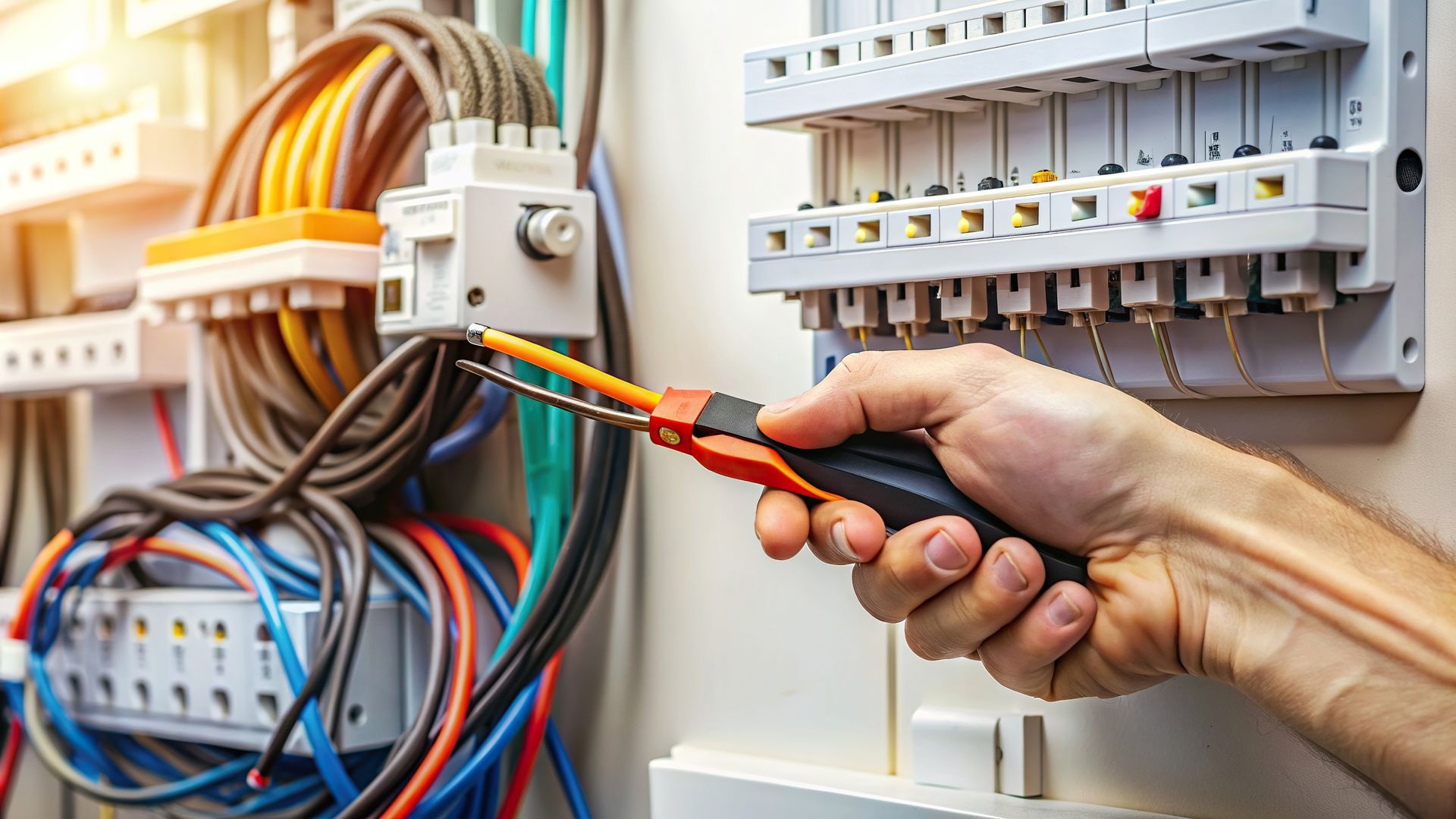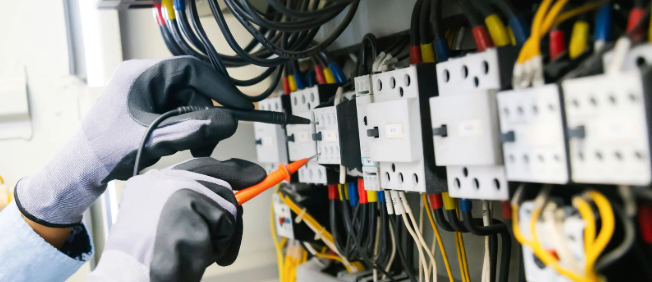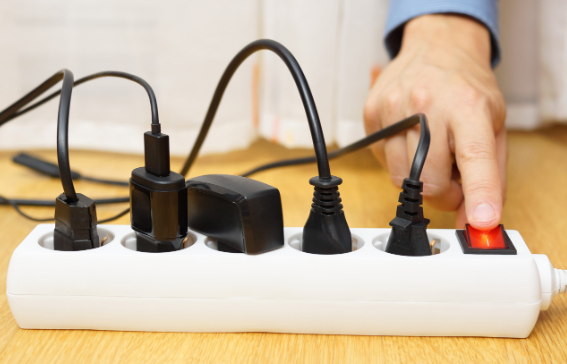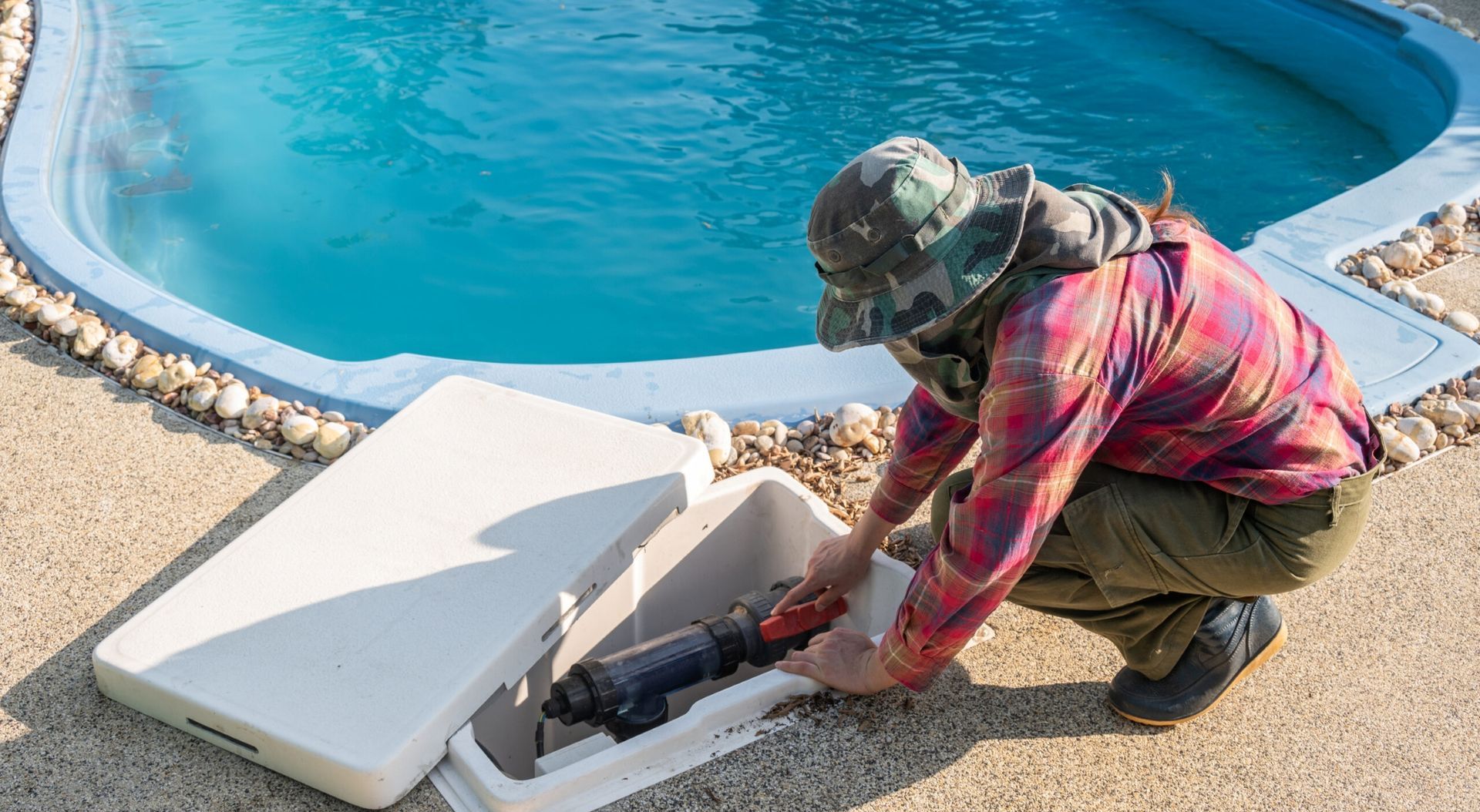The Role of Electrical Inspections in Property Safety
How Electrical Inspections Play in Maintaining Property Safety
Why Electrical Inspections Matter
In the world of property ownership, few systems are as critical yet overlooked as electrical infrastructure. Whether you own a home or business in Toronto or the wider GTA, your electrical system silently powers your daily activities—until something goes wrong. An electrical system safety assessment is a thorough review of your property's electrical wiring and devices specifically designed to identify potential electrical hazards that could lead to fire or shock.
At BradCon Electrical, we understand that electrical safety is not just about compliance with regulations—it's about protecting what matters most: your family, employees, and property investments. This guide explores the critical role electrical inspections play in maintaining property safety and how professional inspections can prevent dangerous situations before they occur.
Understanding Electrical Inspections in Ontario
The Role of the Electrical Safety Authority (ESA)
In Ontario, electrical safety is governed by the Electrical Safety Authority (ESA), a regulatory body that oversees all aspects of electrical safety in the province. The ESA is responsible for public electrical safety in Ontario as designated by Ontario Regulation 89/99, and arranges electrical inspections whenever an electrician or contractor is installing or changing electrical service.
These inspections ensure that all electrical work meets the Ontario Electrical Safety Code (OESC), a comprehensive set of standards designed to minimize electrical hazards and protect property owners. The ESA's role is essential in maintaining high safety standards across residential, commercial, and industrial properties throughout the province.
Types of Electrical Inspections
Different situations call for different types of electrical inspections, each serving a specific purpose in the safety ecosystem:
- New Construction Inspections:
Required during new building construction to ensure all electrical systems are properly installed according to code.
- Renovation Inspections:
For renovations involving new electrical wiring or devices, the Ontario Electrical Safety Code requires reporting the work to the ESA by filing a notification of work (or "permit"), which creates a permanent record and triggers a review process.
- Service Inspections:
For service upgrades, relocations, or replacements where power must be disconnected and then inspected before being restored.
- Rough-in Inspections:
Conducted when branch circuit wiring and outlet boxes are installed but before wiring is concealed behind walls.
- Final Inspections:
Completed after all electrical work is finished to ensure compliance with safety codes.
- Fire Code Compliance Inspections:
Specifically focused on ensuring electrical systems meet fire safety standards.
- Pre-Purchase Inspections:
Voluntary inspections conducted when buying a property to identify potential electrical issues.
The Inspection Process: What to Expect
When you schedule an electrical inspection with BradCon Electrical, our licensed professionals will conduct a thorough assessment of your property's electrical system. The inspector will evaluate several areas including wiring, receptacles, switches, and other electrical components, sometimes temporarily turning off power to safely inspect the electrical panel.
Here's what a comprehensive electrical inspection typically includes:
1. Electrical Panel Assessment
The heart of your electrical system—the panel—receives special attention during inspections. Our technicians check for:
- Proper installation and secure mounting
- Adequate capacity for your property's needs
- Appropriate circuit breakers or fuses
- Absence of overheating signs
- Proper labeling of circuits
- Sufficient clearance around the panel
2. Wiring Evaluation
Faulty wiring is one of the leading causes of electrical fires. Our inspections include:
- Checking for damaged, frayed, or exposed wiring
- Verifying appropriate wire gauge for each circuit
- Inspecting junction boxes for proper connections
- Looking for signs of amateur or DIY work
- Identifying outdated wiring systems (like knob-and-tube)
3. Outlet and Switch Inspection
These everyday contact points can hide serious hazards:
- Testing outlets for proper grounding
- Checking for GFCI protection in required locations
- Verifying proper installation and secure mounting
- Looking for signs of damage, overheating, or arcing
- Testing functionality of all switches
4. Fixture and Appliance Checks
Light fixtures and major appliances receive careful scrutiny:
- Verifying proper installation and secure mounting
- Checking for appropriate wattage limits in light fixtures
- Ensuring appliances have dedicated circuits where required
- Inspecting for signs of overheating or damage
Common Electrical Hazards Discovered During Inspections
Electrical inspections frequently uncover hidden dangers that property owners never suspect. According to safety data, residential building electrical fires most often start with electrical wire or cable insulation (31%) and structural members or framing (18%). Here are some of the most common hazards our inspectors identify:
1. Overloaded Circuits
One of the most prevalent issues in both homes and businesses is circuit overloading. Modern properties use far more electronic devices than buildings from just a few decades ago, putting strain on electrical systems that weren't designed for today's demands. Signs of overloaded circuits include:
- Frequently tripping breakers
- Dimming lights when appliances turn on
- Warm outlets or switch plates
- Burning smells near outlets or panels
2. Outdated Wiring Systems
Older properties throughout Toronto and the GTA often contain outdated wiring systems that don't meet current safety standards. Many buildings, especially older ones, have not been updated to meet modern electrical safety standards, which can lead to overheating and fires. Problematic systems include:
- Knob-and-tube wiring (common in pre-1950s homes)
- Aluminum wiring (used in the 1960s-1970s)
- Two-prong ungrounded outlets
- Insufficient capacity for modern needs
3. Amateur or DIY Electrical Work
Many hazards stem from well-intentioned but improperly executed DIY electrical projects. When it comes to your safety and that of your loved ones, electrical work should be performed by professionals with the equipment, training, and expertise to do it safely the first time. Common DIY hazards include:
- Improper wire connections
- Incorrect wire gauge for the circuit
- Missing junction boxes
- Improperly installed outlets and switches
- Amateur panel modifications
4. Water and Electrical Proximity Issues
Water and electricity create a dangerous combination. Our inspectors frequently find:
- Non-GFCI outlets near water sources
- Improper outdoor electrical installations
- Water damage near electrical components
- Inadequate protection for exterior outlets
5. Damaged Components
Normal wear and tear, along with environmental factors, can degrade electrical components over time. Power and extension cords that are pinched, pierced, bent or otherwise damaged may not look threatening, but they present serious fire and shock hazards. Common damage includes:
- Cracked outlet or switch plates
- Loose wiring connections
- Corroded terminals
- Damaged insulation on wires
- Burnt or discolored outlets
The Consequences of Skipping Electrical Inspections
Neglecting regular electrical inspections can have serious consequences for property owners:
1. Fire Risks
Electrical fires cause hundreds of deaths, thousands of injuries, and over $1.2 billion in property loss annually, with most occurring in one- and two-family dwellings. These fires often start in areas hidden from view, making regular inspections crucial for early detection of hazards.
2. Insurance Complications
Many insurance policies require proof of proper electrical work and inspections. Insurance companies may deny claims if electrical work is performed without the proper permits and inspections, leaving property owners financially vulnerable in case of damage.
3. Legal Liability
Property owners have a legal responsibility to maintain safe premises. If an electrical fire or injury occurs due to negligence in maintaining electrical systems, owners may face substantial legal liability.
4. Financial Costs
Small electrical issues can escalate into major problems if left unaddressed. What might cost a few hundred dollars to fix early on can turn into thousands in damages, repairs, and lost property if neglected.
5. Personal Safety Risks
Most importantly, faulty electrical systems put the lives of occupants at risk through potential shocks, electrocution, or fires. No property value is worth the risk to human life.
When to Schedule an Electrical Inspection
Certain situations should always trigger an electrical inspection:
1. When Purchasing a Property
The last thing you would ever want to do is buy a house that needs major improvements to the electrical systems, which is why a residential electric inspection ensures your home has safe electrical systems that are up to code.
2. Before Major Renovations
Any renovation involving electrical work should include an inspection both before work begins (to identify existing issues) and after completion (to verify compliance).
3. After Experiencing Electrical Issues
If you notice flickering lights, frequent circuit breaker trips, buzzing sounds, or unusual odors from outlets, an immediate inspection is warranted.
4. Following Water Damage or Flooding
Water exposure can compromise electrical systems in ways that aren't immediately apparent, making post-water-damage inspections essential.
5. For Older Properties
Properties over 25 years old should have regular electrical inspections, as systems degrade over time and older installations may not meet current safety standards.
6. When Adding Major Appliances
Before installing high-demand appliances like air conditioners, hot tubs, or electric vehicle chargers, an inspection can verify your system can handle the increased load.
The BradCon Electrical Inspection Advantage
At BradCon Electrical, we bring specialized expertise to every inspection we perform:
1. ESA-Licensed Professionals
Our team consists of fully licensed electrical contractors with the knowledge and certifications to perform thorough inspections according to all provincial requirements.
2. Comprehensive Assessment Protocol
We don't just check boxes; we conduct meticulous evaluations using a detailed protocol that covers all aspects of your electrical system.
3. Clear Documentation
After your inspection, we provide clear, detailed reports that identify any issues, explain their significance, and outline recommended actions.
4. Practical Solutions
When we identify problems, we offer practical, cost-effective solutions tailored to your specific situation and needs.
5. Preventive Recommendations
Beyond addressing immediate concerns, we provide recommendations to enhance the safety and efficiency of your electrical system for the long term.
Taking the Next Step Toward Electrical Safety
Electrical safety isn't a one-time consideration—it's an ongoing commitment to protecting your property and its occupants. Regular inspections play a crucial role in that commitment, providing peace of mind and early detection of potential hazards.
As experts in electrical safety throughout Toronto and the GTA, BradCon Electrical is ready to partner with you in maintaining safe, code-compliant electrical systems. Whether you're purchasing a new property, planning renovations, or simply due for a safety check, our professional inspection services can help identify and address potential problems before they become dangers.
Contact BradCon Electrical at (416) 881-4212 to schedule your comprehensive electrical inspection and take an important step toward ensuring the safety of your property.
Frequently Asked Questions
How often should I have my home's electrical system inspected?
For most residential properties, we recommend an electrical inspection every 3-5 years. However, older homes (25+ years) may benefit from more frequent inspections—every 2-3 years. If you notice any electrical issues such as flickering lights, frequent circuit breaker trips, or unusual odors from outlets, you should schedule an inspection immediately regardless of when your last one occurred.
What's the difference between an ESA inspection and a home inspector's electrical assessment?
An Electrical System Safety Assessment conducted by a Licensed Electrical Contractor provides a comprehensive review specifically designed to identify potential electrical hazards that could lead to fire or shock. In contrast, a general home inspection typically includes only a basic assessment of electrical systems as part of a larger property evaluation. For thorough electrical safety verification, a specialized electrical inspection by qualified professionals is recommended.
Can I perform my own electrical inspection to save money?
While homeowners can check for obvious issues like damaged outlets or frequently tripping breakers, a proper safety inspection requires specialized knowledge and equipment. Licensed electricians understand the complexities of electrical systems and can identify hidden dangers that untrained eyes might miss. Given the potential consequences of overlooked electrical hazards, professional inspections are a worthwhile investment in your property's safety.


